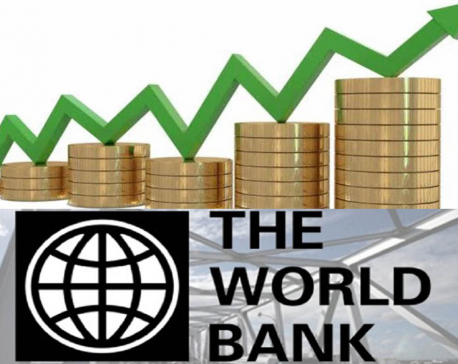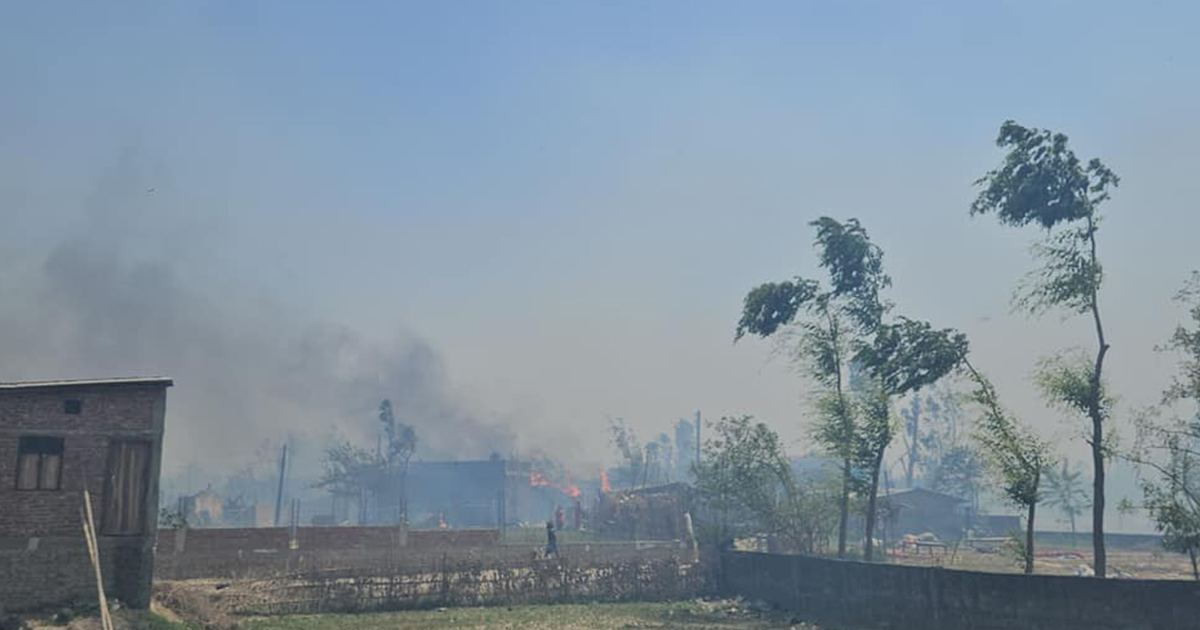
OR
‘Landlocked countries get access to sea ports, but lack capacity to use them’
Published On: September 27, 2019 07:10 AM NPT By: Ashok Dahal | @ashokpillar
NEW YORK, Sept 27: Landlocked countries have sought unfettered, efficient and cost-effective access to and from the sea to reduce their remoteness to the global marketplace at a high-level meeting held on the sidelines of the UN General Assembly in New York.
At an annual meeting of the Land-locked Developing Countries (LLDCs) held at the UN Headquarters on Wednesday, the countries complained that they have been unable to utilize the access to the sea ports due to lack of capacity and infrastructure.
“The major challenge for the landlocked countries is how to utilize the right to access the sea ports in the absence of capacity and infrastructure,” said Foreign Minister Pradeep Gyawali after the meeting.
The international community adopted the Vienna Program of Action for the LLDCs for the decade 2014-2024 to help the LLDCs achieve sustainable and inclusive growth. Most of the countries at the meeting on Wednesday stressed the need for international support for infrastructure development for effective implementation of the Vienna Program of Action, which enables the landlocked country’s easy access to the sea ports.
The annual meeting of the LLDCs also discussed the outcome report of the Vienna Program of Action prepared by Austria and Bhutan, as the group plans to conduct its mid-term review in December. Most countries at the meeting sought multilateral collaboration for infrastructure development, poverty alleviation, e-commerce, investment and implementation of the Vienna Program of Action, according to the Nepali delegation members.
“The draft outcome underscores the importance of unfettered, efficient and cost-effective access for LLDCs to and from the sea,” said Gyawali. “This only can reduce the cost of trade and decrease the remoteness to global marketplace. Nepal believes that reliable, quality and sustainable infrastructure must be built in the first place to transform the future of these countries. This is a dynamic process requiring huge investment and partnership.”
Other countries complained at the meeting that their issues go unheard in the international forum and climate change impact in such countries was overlooked by the international community.
There are 32 landlocked developing countries across Asia, Africa, Europe and Latin America with a population of about 440 million according to the UN. As many as 12 landlocked countries are in Asia. “Infrastructure gap in LLDCs compared to other countries is the highest. Building connectivity is extremely difficult. Geographical remoteness has eroded the competitiveness of their products,” Minister Gyawali said. “The best support to LLDCs would be to ensure full, timely and effective implementation of the Program of Action.”
According to the report of the UN Office of the High Representatives for the Least Developed, Landlocked and Small Island Countries, the average annual per capita income of those countries was US$ 1,510 while the average per capita income of the rest of the world was US$ 10,391 in 2015.
Nepal continues to be solely dependent on India for accessing sea ports, even as Kathmandu inked a historic trade and transit treaty with its northern neighbor China in 2016 in the immediate aftermath of an Indian economic blockade lasting several months.
The April 2019 agreement on implementing transit and transport between Nepal and China paves the way for Nepal to access the sea without passing through the Indian territory. The 17-point protocol agreement mentions that Nepal will be able to trade with China through various six customs points, namely Tatopani, Kerung, Kimathanka, Korala, Yari and Olangchung Gola.
Nepal has been elected bureau member of the LLDCs for 2020-21, and Tajikistan as chair.
You May Like This

UML leader Basnet to Balen: Don't be pampered just because you have a few hundred fans on Facebook
KATHMANDU, August 26: While the Mayor of Kathmandu Metropolitan City (KMC), Balendra Shah, is speeding up the work to demolish... Read More...

Complete education, full health could double Nepal's GDP per capita: WB
KATHMANDU, June 7: Nepal has the potential to double its Gross Domestic Product (GDP) per capita in the long run if... Read More...

Govt restricts Chand group’s activities
KATHMANDU, March 13: The government on Tuesday outlawed the ‘political activities’ of the semi-underground Communist Party of Nepal led by... Read More...




Just In
- District Court Rautahat sentences four individuals including Aftab Alam to life imprisonment
- Class 12 exam starts today with participation of over 390,000 candidates
- Weather expected to be partially cloudy in hilly areas, clear in remaining areas
- Navigating the Digital Diplomacy Divide: Balancing Tradition and Technology in Global Relations
- Youth attempts suicide amid police torture over Facebook comments against home minister
- Time to declare EVMs’ end
- World Malaria Day: Foreign returnees more susceptible to the vector-borne disease
- MoEST seeks EC’s help in identifying teachers linked to political parties













Leave A Comment